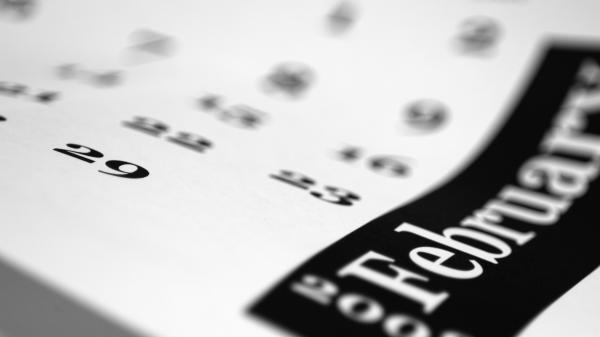The Doomsday Rule
Some dates fall on the same weekday every year. Use this knowledge to calculate the weekday of any given date in your head.

The last day of February is a doomsday.
©iStockphoto.com/Christopher Stokes
Did you know that the dates 4/4, 6/6, 8/8, 10/10 and 12/12, as well as the last day of February, July 4, and Halloween always fall on the same weekday within any given year? For example, they may all fall on a Monday in one year and on a Saturday in another year.
Find out why this is so and how you can use the “doomsday rule” to calculate the weekday of any date in your head within seconds.
What is Doomsday?
Apart from being a term for the end of the world, doomsday also refers to a mathematical phenomenon in the Gregorian calendar we use today.
Calculate the weekday for any date in your head
Try our new Doomsday Calculator
In 1970, British mathematician John Conway devised a way to use the doomsday phenomenon to quickly calculate the weekday of any given date without the help of calculators, computers, or calendars.
His algorithm is based on the fact that there are some dates that inevitably share the same weekday within any given year:
- the last day in February (February 28 in a common year, February 29 in a leap year)
- March 7
- April 4 (or 4/4)
- May 9 (or 5/9)
- June 6 (or 6/6)
- July 11 (or 7/11)
- August 8 (or 8/8)
- September 5 (or 9/5)
- October 10 (or 10/10)
- November 7 (or 11/7)
- December 12 (or 12/12)
- some other dates, including July 4 (U.S. Independence Day) and Halloween
In January, the date varies: it is January 3 in a common year; in a leap year, it falls on January 4.
The weekday these dates fall on is called doomsday. The phenomenon is based on the fact that the number of days between these dates are always evenly divisible by 7, which is the number of days per week.
How to remember Doomsdays
While dates like 4/4, 6/6, 8/8, 10/10 and 12/12 are relatively easy to remember, there is a handy mnemonic to memorize the fixed doomsday dates in the odd-numbered months, most of which are based on either 5 and 9, or 7 and 11 (except March): I work from 9 to 5 at the 7-11.
The January doomsday can be remembered by the fact that leap years happen roughly every 4 years, so in the 4th year, doomsday is on the 4th.
Don't want to do the math?
Use the Weekday Calculator to find out the weekday for any date.